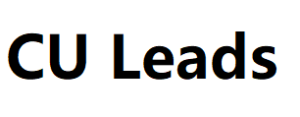In the first three quarters of 2018, the indian economy grew by 7.1% year-on-year. The figure did not meet the expectations of economists – for example, experts by bloomberg, most growth of at least 7.5%.
The slowdown in the indian economy in 2018 can be to relativel.Y high oil prices and an increase in the cost of servicing funds. In addition, the country’s economy is still suffering from the negative .Consequences of the demonetization out at the end of 2016. However, it can be that the monetary policy of the reserve bank of india. (rbi) will remain quite loose and allow india to cope with market. Turbulence without significant damage to the domestic market. Despite this, coface analysts predict that indian gdp .Growth will continue to slow down and reach ~7.3% by the end of the 2018/19 financial year.
Expensive Oil and Reforms Have Weakened the Indian Market

Despite the slowdown in economic development in the 3rd quarter of 2018, india remains the leader in terms of gdp growth among emerging markets in asia, bypassing through Middle East Mobile Number List various the philippines and even china in this indicator. Some signs, however, indicate that the indian economy will soon face new challenges that could dampen market growth prospects.
One of the main drivers of the development of the indian economy remains the personal consumption of households (58% of gdp), although its volumes fell in 2017-2018 as a result of from CU Leads to demonetization (the abolition of banknotes in denominations of 500 and 1000 rupees) and the introduction of a goods and services tax (gst) .
Despite the relatively long time since demonetization, its negative side effects are still affecting the indian market, as the informal sector of the economy has been hit hard. Higher energy prices and a weaker rupee have also on private consumption.
The Reserve Bank of India to Economic Difficulties
With two key rate hikes in june and august 2018. Rising costs of servicing borrowed funds will continue to negatively affect the growth prospects of the indian economy. The high share of non-performing assets in the country’s banking sector (12% of total assets in march 2018) forces banks to limit lending, which only exacerbates the debt financing gap.
The problem was also by the september default of india’s largest non-bank creditor il&fs, which seriously entrepreneurs in several key sectors of the indian economy, such as retail and construction. Difficulty in access to funds led to a decrease in investment and a slowdown in the growth of industrial production.
Risks and forecast
Thus, the volume of foreign direct investment in the first three quarters of 2018 fell by 10% to the same period of the previous year, while the industrial production growth rate was only 4.5% (to +8.7% in the first nine months of 2017) . These facts speak of the failure of prime minister modi’s economic policy.

